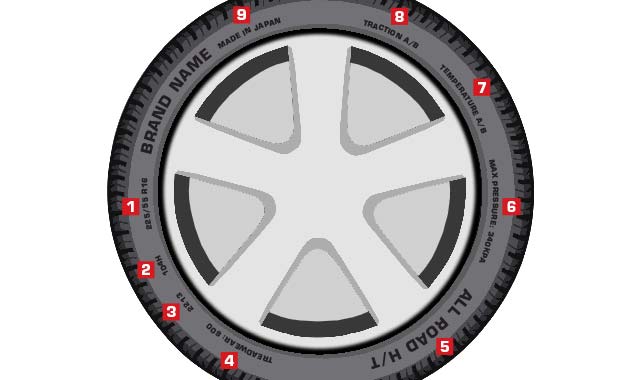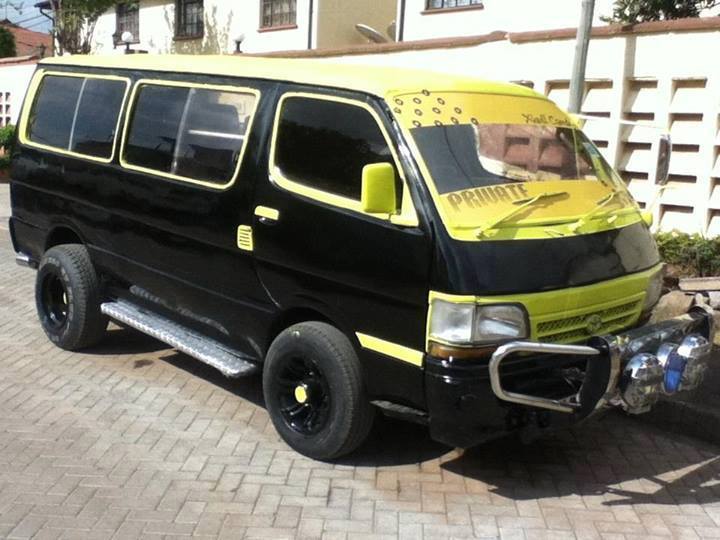THE writing on the side of your tyre or tyres tells you a lot about what they’re capable of and how they influence the driving dynamics of your vehicle. This is what you’ll find when you “read” your tyres:
1. TYRE SIZE
Let’s take the example of 225/55 R16. The first figure is the tyre width in millimetres; 55 is the aspect ratio, which in this case means the height of the tyre from outside of the wheel rim to the outer edge of the rubber is 55%; R points to a radial tyre; and 16 is the inside diameter of the tyre measured in inches.
2. LOAD AND SPEED RATING
Different figures mean different ratings. There are far too many to list here, but an example is a rating of 84 V, which means the maximum tyre load is 500 kg and maximum speed that the tyre is designed for is 240 km/h. A way to work out the maximum load of the vehicle is multiplying 500 kg by four (for the number of tyres), which in this case equals 2 000 kg. The most common speed rating is H, which is suitable for up to 210 km/h.
3. DATE OF MANUFACTURE
These four figures represent the week and year. 2213 means that the tyre was made in the 22nd week of 2013. Do not buy tyres that are older than four years.
4. TREADWEAR
Higher figures mean a longer expected lifespan. Look for figures between 100 and 700.
5. TYRE TYPE
For example, H/T means the tyre is suitable for tarmac and gravel. If there is a letter before the tyre size, for example a T, this stands for temporary use, i.e. a space-saver spare.
6. MAXIMUM INFLATION PRESSURE
This may be 340 kPa, for example. This is not to be confused with the carmaker’s recommended pressure.
7. TEMPERATURE
This can vary from A to C, with A suitable for hot climates and higher speeds like ours.
8. TRACTION
This indicates grip in wet conditions. Figures run from AA (best) to C (worst).
9. COUNTRY OF MANUFACTURE
For example, “Made in Japan.”
RUN-FLAT
If the tyres have stronger sidewalls to allow them to be used when deflated, you’ll see “Run On Flat Technology”.
HOW TO EXTEND TYRE LIFE
Check the pressures regularly. Just looking at the tyres to see if they’re flat doesn’t work. Sidewalls are shallower and stiffer these days, and so might look okay when they aren’t. The recommended pressures should be inside the fuel flap, on the inside of the driver’s or passenger’s door pillars, or in the owner’s manual. There should be a figure for light load and a higher figure for a fully loaded car. If under-inflated, tyres wear more towards the outside edge. If over-inflated, tyres degrade more in the centre of the tread.
INSPECTION
Every month, examine the tread for abnormal wear. Make sure you inspect the inside of the tyres (not normally visible from standing next to the car), as this is often where most of the wear takes place when wheel alignment is out, or the car has a designed-in negative camber.
ROTATION
A FWD car wears out the front tyres before the rears. To a lesser extent, the opposite applies for RWD vehicles. Rotate the tyres according to the maker’s instructions to even out wear. This, however, means having to replace all four tyres at the same time. Some prefer to buy just one new set at a time to spread the cost.
AGE
Tyre life is a tricky one. Some old tyres still perform perfectly well, while others crack or delaminate. Heat and exposure to sunlight play a roll in tyre degradation. Because most tyres are replaced after the tread has worn out (generally after a maximum of five years), it’s not a problem. But, on low-mileage cars the tyres might have sufficient tread for up to 15 or 20 years, especially for seldom-used classic cars. Between five and 10 years is seen as the limit and be wary of high speeds or heavy loads if your tyres are of pensionable age. Inspect the sidewalls for signs of hairline cracks. Tyres should have a manufacturing date on them, but this is not always obvious.




![[PHOTOS] Top 20 Used Cars to Avoid Buying in Kenya](../../../blog/wp-content/uploads/2013/11/top-used-unreliable-cars-to-avoid2-80x60.jpg)


![Here are some of the best tuned cars in kenya by state of the art garages [PHOTOS]](../../../blog/wp-content/uploads/2013/11/29402_10151301757042065_340470732_n-e1384498044289.jpg)

![[PHOTOS] Top 20 Used Cars to Avoid Buying in Kenya](../../../blog/wp-content/uploads/2013/11/top-used-unreliable-cars-to-avoid2-100x70.jpg)






